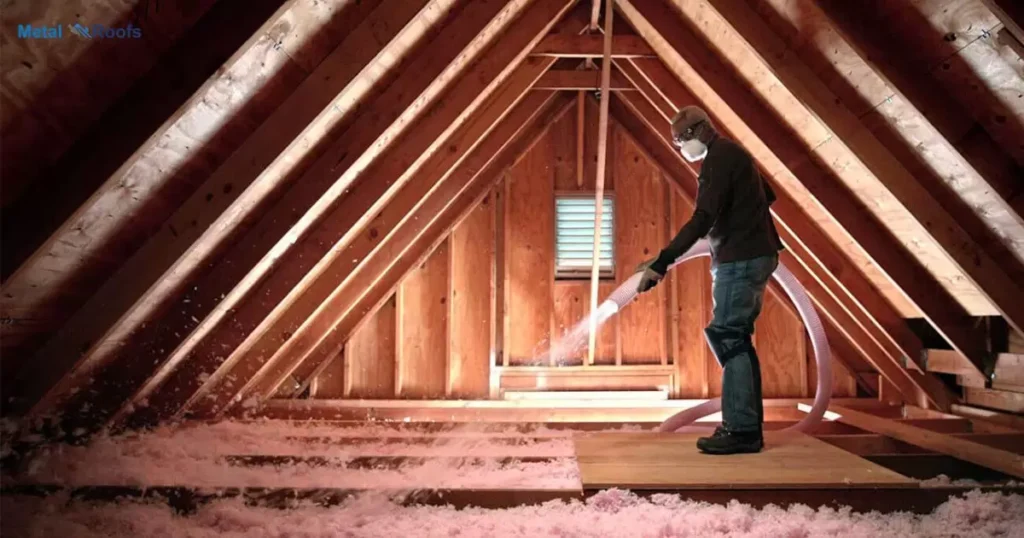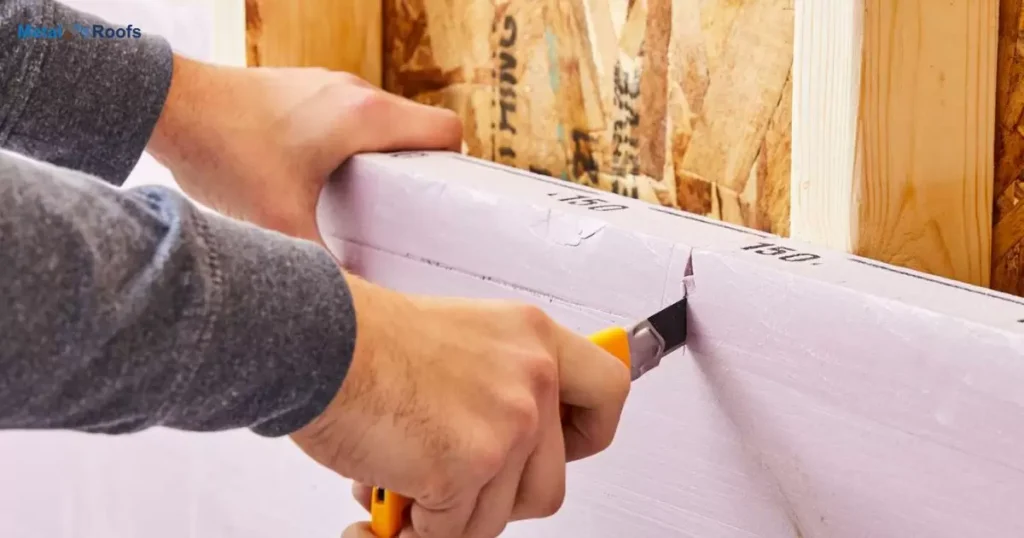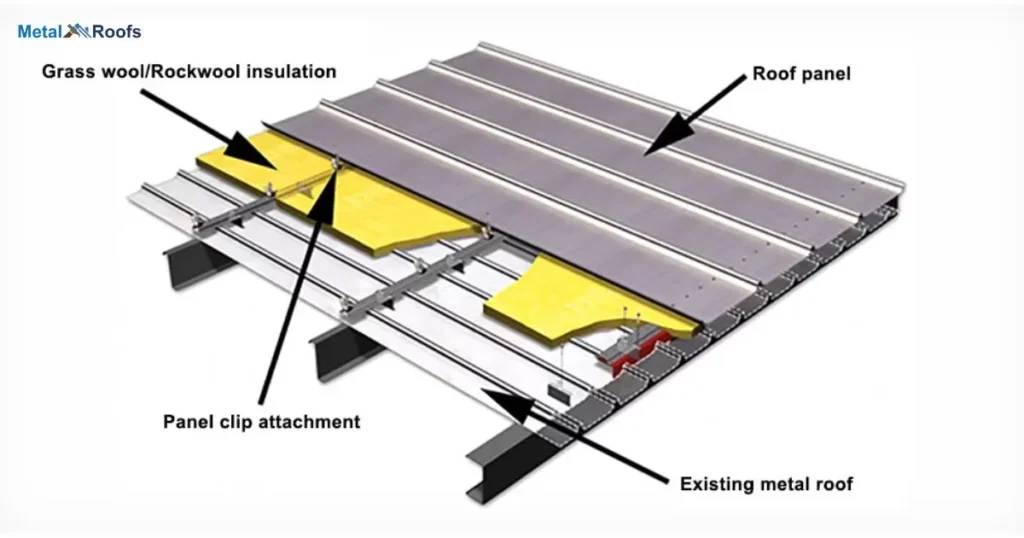Insulation underneath a metal roof facilitates altered indoor temperature via preventing heat loss in wintry weather and heat gain in summer time. It additionally reduces electricity payments and increases comfort via developing a barrier among the roof and residing area.
Adding rigid foam insulation below a metallic roof can extensively enhance your own home’s strength efficiency. Save money on heating and cooling costs at the same time as taking part in an extra comfortable indoor surroundings during the yr.
Insulation under a metallic roof, such as rigid foam insulation, is crucial for power performance. It preserves regular indoor temperatures and reduces heating and cooling costs. This insulation creates a barrier that continues your own home snugly 12 months-spherical.
Key Takeaways
- Rigid foam insulation under a metal roof improves energy efficiency and reduces heating/cooling costs.
- Proper installation is crucial for optimal performance and long-term benefits.
- Consider materials, tools, and techniques carefully for a successful insulation project.
Pros and Cons of Rigid Foam Insulation
Pros:
- Excellent thermal insulation, reducing energy costs.
- Moisture-resistant, preventing mold and mildew growth.
- Lightweight and easy to install, reducing labor time and costs.
Cons:
- Can be more expensive upfront compared to other insulation types.
- Requires careful handling during installation to avoid damage.
- May release harmful gases if not properly sealed or installed.
Installation of Rigid Foam Insulation Under Metal Roof

Installing rigid foam insulation under a metal roof is a straightforward process. First, ensure the roof is clean and free of debris. Then, cut the insulation to fit between the roof rafters and secure it in place using adhesive or fasteners.
Seal gaps and joints to prevent leaks, then attach foam board insulation to a metal roof for improved energy efficiency and indoor comfort. Consider professional installation for best results.
Choosing the Right Rigid Foam Insulation
| Aspect | Consideration |
| R-Value | Higher R-values offer better insulation performance. |
| Thickness | Thicker insulation provides increased thermal resistance. |
| Compatibility | Ensure the insulation is compatible with your building structure and climate. |
| Professional Consultation | Consult with insulation professionals for tailored recommendations based on your specific needs. |
| Building Codes Compliance | Check local building codes to ensure the chosen insulation meets regulatory requirements. |
| Energy Efficiency Goals | Consider your energy efficiency goals and choose insulation that aligns with those objectives. |
When choosing rigid foam insulation, consider factors like R-value and thickness. Higher R-values offer better insulation. Thicker insulation provides increased thermal resistance.
Assess the insulation’s compatibility with your building structure and climate. Consult with professionals for tailored recommendations. Proper selection ensures optimal energy efficiency and comfort in your space.
Tools and Materials for Installing Rigid Foam Insulation
Materials for installing rigid foam insulation are essential for a successful project. You’ll need rigid foam boards, adhesive, fasteners, and a utility knife. Measure and cut the foam boards to fit snugly between the roof joists, then secure them in place with adhesive and fasteners.
Foam board panels
These panels come in various thicknesses and sizes. They provide excellent thermal resistance and are easy to handle and cut for a precise fit between roof joists.
Adhesive compatible with foam boards and metal surfaces
When installing rigid foam insulation, use an adhesive compatible with foam boards and metal surfaces. This ensures a strong bond between the insulation and the roof. Look for adhesives specifically designed for these materials for optimal results.
Caulking gun
A caulking gun is a necessary tool for installing rigid foam insulation. It helps apply adhesive smoothly and evenly onto the foam boards. Make sure to use a high-quality caulking gun for precise and efficient application during your insulation project.
Safety goggles and gloves
When installing rigid foam insulation, safety goggles and gloves are essential tools. Goggles protect your eyes from debris, while gloves shield your hands from cuts and irritation. Always prioritize safety when working with insulation materials.
Ladder (if needed)
You may need a ladder for installing rigid foam insulation in high-ceiling areas. Ensure it’s sturdy and tall enough to reach comfortably. Safety first – always use the ladder correctly and follow safety guidelines.
Measuring the Area for Rigid Foam Insulation

To measure the area for rigid foam insulation, start by calculating the square footage of the roof. Measure the length and width of each section, then multiply to get the total area. Account for any obstructions like vents or chimneys when measuring.
Next, determine the thickness of insulation needed based on your climate and energy efficiency goals. Consider factors like R-value and local building codes. Once you have the measurements and insulation requirements, you can proceed with purchasing the necessary materials for installation.
Alternative Insulation Methods for Metal Roofs
Insulating metal roofs is essential for maintaining comfortable indoor temperatures and energy efficiency. Here are some alternative insulation methods for metal roofs:
Spray Foam Insulation: Applied directly onto the underside of the roof, expanding to fill gaps and provide excellent insulation.
Rigid Foam Insulation: Boards installed between the roof framing and metal panels for good thermal resistance.
Reflective Insulation: Includes a layer of reflective material to reduce radiant heat transfer.
Radiant Barrier Foil: Installed under roof rafters or directly under metal panels to reflect radiant heat.
Blown-In Insulation: Loose-fill insulation blown into the attic or between roof joists for thermal resistance.
Insulated Roof Panels: Metal panels with built-in insulation for structural support and thermal resistance.
Green Roof Systems: Vegetation and growing medium added on top of the roof for natural insulation.
Cool Roof Coatings: Applied to metal roofs to improve reflectivity and reduce heat absorption.
When choosing an insulation method for a metal roof, consider factors such as climate, building codes, budget, and desired energy efficiency levels.
It’s also important to ensure proper installation to maximize the effectiveness of the insulation and avoid issues like condensation or air leaks. Consulting with insulation professionals or roofing contractors can help you determine the best insulation solution for your specific needs.
How To Insulate Metal Roof With Purlins?

To insulate a metal roof with purlins, start by measuring and cutting rigid foam insulation. Place the insulation between the purlins, ensuring a snug fit without gaps. Secure the insulation using adhesive or fasteners, then cover it with a vapor barrier for added protection.
Install the metal roofing panels over the insulated purlins. Fasten the panels securely to the purlins using screws or clips. Ensure proper sealing around penetrations and edges to prevent air leaks. This method provides effective insulation while maintaining the structural integrity of the metal roof with purlins.
Frequently Asked Questions
What is the best insulation for a metal building roof?
Rigid foam insulation is often considered the best choice for insulating a metal building roof due to its excellent thermal performance and moisture resistance.
What is the foam for on a metal roof?
The foam on a metal roof is for insulation, helping to regulate indoor temperatures and reduce energy costs.
Can you spray foam insulation directly to a metal roof?
Yes, you can spray foam insulation directly onto a metal roof for effective insulation and waterproofing.
Conclusion
In conclusion, insulation beneath a metal roof is a smart investment. It allows regulate indoor temperatures, saving electricity and money. By choosing rigid foam insulation, house owners can experience yr-spherical comfort.
The insulation barrier reduces noise and complements the roof’s longevity. It’s a practical solution for enhancing typical home performance and comfort. Consider adding insulation underneath your metal roof for lasting advantages.











